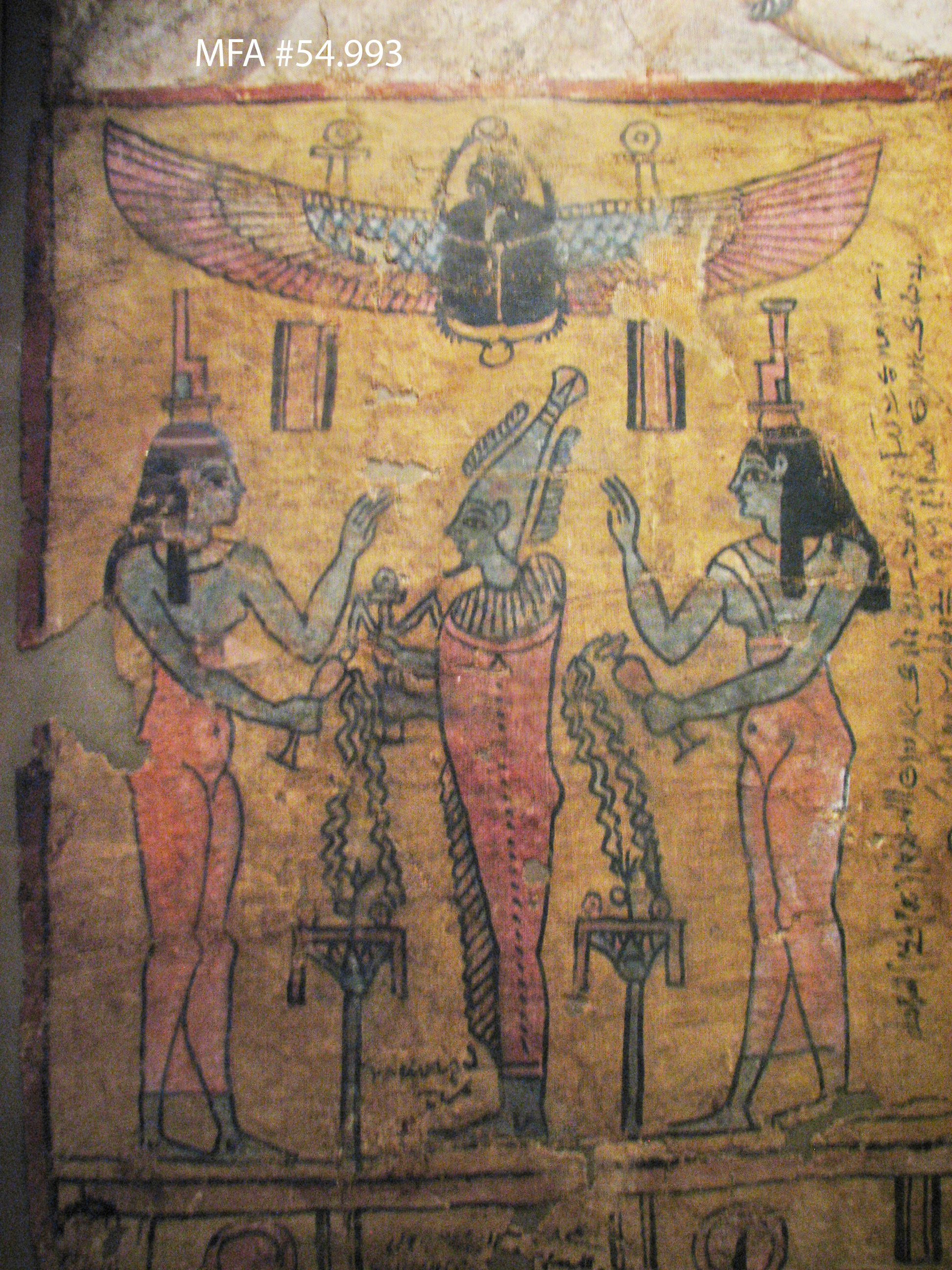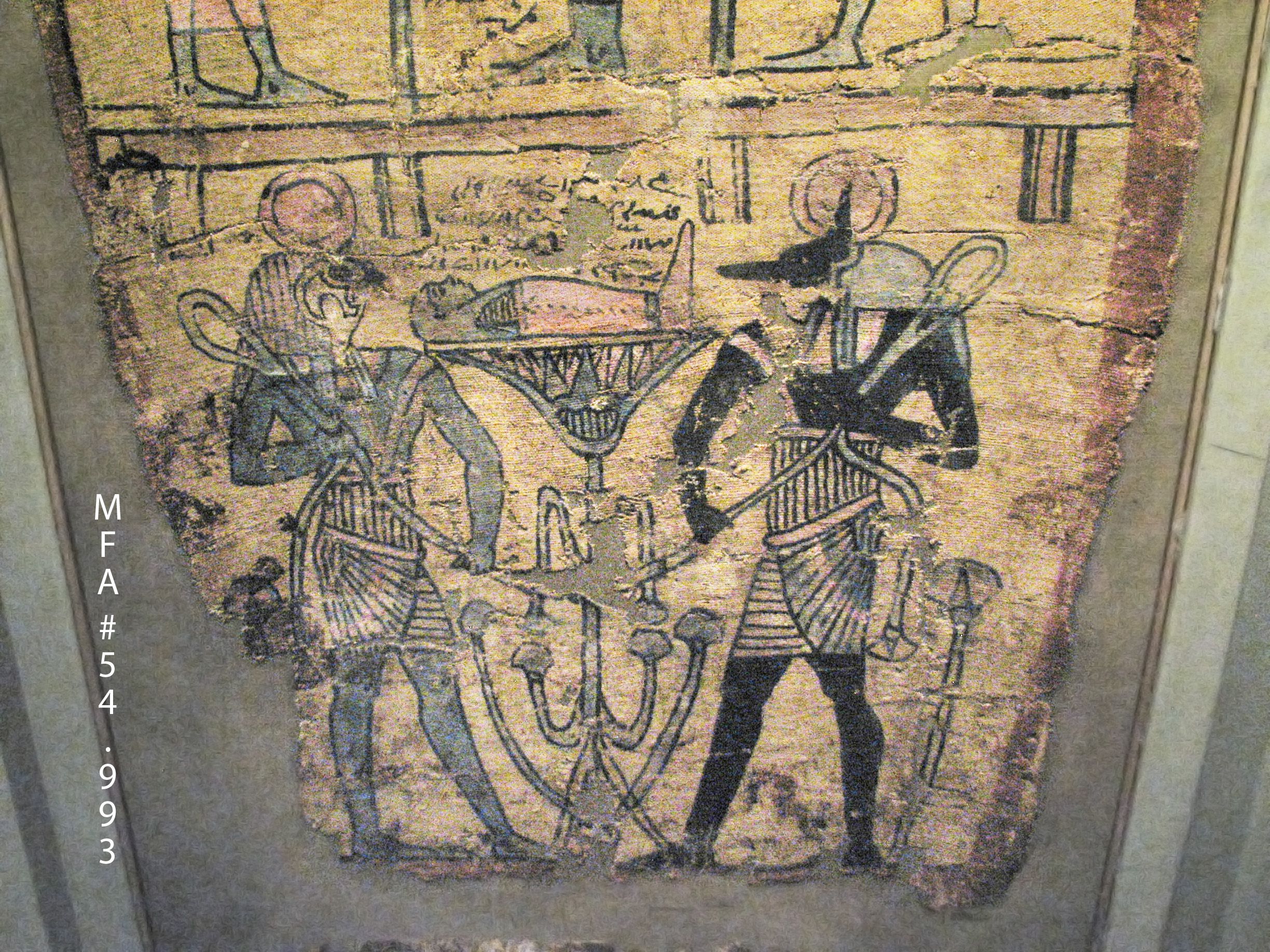
Painted funerary shroud of Ta-sherit-wedja-Hor
Egypt Roman Period, late 2nd century C.E.
Tempera on linen, Height x width: 190.5 x 48.7 cm (75 x 19 3/16 in.)
Gift of the Class of the Museum of Fine Arts 1954, MFA #54.993
Photo ©Joan Ann Lansberry, 2014

Difficult lighting situation compensated for as best as possible!
"The decoration of this linen shroud combines the naturalistic portrait painting of the Roman Period with motifs from Egyptian funerary mythology." (From the info card)
Indeed, it appears as though she's wearing the Egyptian motifs as a cozy blanket:

The museum website photo gives overall view.

Photo ©Joan Ann Lansberry, 2014
"In the upper register, beneath a winged scarab, the perennial mourners Isis (on [Tasherit's] right) and Nephthys (on [her] left) pour libations to their brother Osiris, who stands, shrouded, in the center. Two vertical bands have not been filled in with hieroglyphic inscriptions. Rather, there are two inscriptions in Demotic script (used to write the Egyptian spoken at that time) — one by the feet of Osiris that gives the date of burial, year 4 (or 11) in the reign of an unnamed emperor; the other behind (and actually at right angles to) Nephthys, giving the name of the deceased, Tasherytwedjahor, and her husband (or father), a priest of Wepwawet, god of Asyut." (From museum website)

Photo ©Joan Ann Lansberry, 2014
"The lower register has a variation of the classic “unification of the Two Lands” motif featuring the falcon-headed god Horus and the jackal-headed god Anubis. Here, however, instead of the sedge and the papyrus of Upper and Lower Egypt, each god tugs at a lotus, and instead of the hieroglyphic sign for “unite” in the center is a tall lotus plant. As ultimate symbol of rebirth, the blossom opens up to reveal a reclining mummy, like the sun god at the dawn of creation." (From museum website)

This is an example of the more usual "unification of the Two Lands" with the gods Set and Horus, found on a statue throne of Senwosret, featuring his throne name KheperKaRa, my own trace created from enlarging a tiny photo


